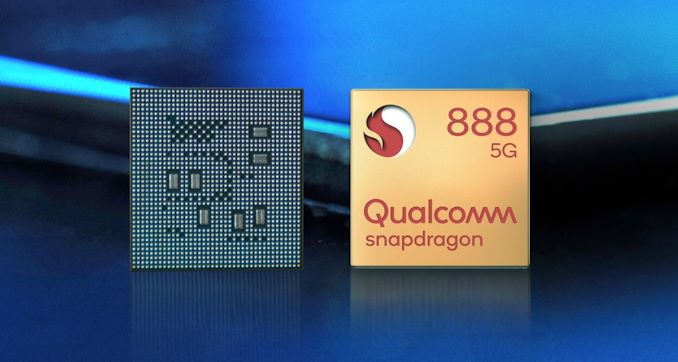The Qualcomm SDX65 is a 5G modem solution designed for smartphones, tablets, laptops, and other Mobile Devices. It's part of Qualcomm's Snapdragon X65 5G Modem-RF System family, which is designed to provide advanced 5G capabilities, high-speed data transfer, and enhanced mobile connectivity. The SDX65 is capable of delivering up to 10 Gbps download speeds and supports both sub-6 GHz and mmWave 5G bands.
If you're looking for equivalent ICs to the Qualcomm SDX65, you would be looking at other 5G modems from different manufacturers that offer similar or comparable performance in terms of 5G speed, global band support, and multi-mode connectivity. Here are some potential alternatives from other semiconductor manufacturers:
1. MediaTek Dimensity 1200 AI
MediaTek's Dimensity 1200 AI is a 5G-integrated chip with advanced AI capabilities and 5G connectivity. While it is not strictly a standalone modem like the SDX65, the Dimensity 1200 AI includes an integrated modem that supports 5G connectivity with similar high-speed performance.
Key Features:
5G Sub-6 GHz and mmWave support.
Download speeds up to 4.7 Gbps (sub-6 GHz).
Dual SIM, dual 5G support.
Advanced AI capabilities for camera, gaming, and user experience.
Applications: Found in high-end smartphones, tablets, and smart devices.
While its maximum download speed is lower than the SDX65, it is still a strong competitor in terms of 5G performance and integration.
2. Samsung Exynos 5123 5G Modem
The Exynos 5123 is Samsung's 5G modem designed to offer 5G connectivity for smartphones and other mobile devices. It supports both sub-6 GHz and mmWave bands, much like the Qualcomm SDX65, but at different levels of speed.
Key Features:
Supports 5G sub-6 GHz and mmWave.
Download speeds up to 7.35 Gbps.
Up to 3.67 Gbps upload speed.
Carrier aggregation, massive MIMO, and other advanced features for enhanced 5G performance.
Applications: Used in smartphones, tablets, and mobile hotspots.
The Exynos 5123 is a direct competitor to Qualcomm's modems and offers comparable performance in the 5G space, with a slightly lower download speed compared to the SDX65.
3. Intel XMM 8160 5G Modem
The Intel XMM 8160 is another 5G modem solution designed for smartphones and laptops. While Intel has largely exited the smartphone modem market, the XMM 8160 is still a viable alternative for 5G integration in some devices.
Key Features:
Supports both sub-6 GHz and mmWave 5G.
Download speeds up to 6 Gbps.
Dual SIM 5G support.
Multi-mode 5G support, including 4G LTE and 5G NR.
Applications: Primarily used in laptops and connected devices (not widely used in smartphones anymore).
While the XMM 8160 is no longer actively used in new devices, it remains a comparable option for 5G modems in certain use cases, particularly in laptop and PC applications.
4. Huawei Balong 5000
Huawei's Balong 5000 is a 5G modem that provides connectivity across both sub-6 GHz and mmWave 5G bands.
Key Features:
Supports 5G sub-6 GHz and mmWave.
Download speeds up to 6.5 Gbps.
Multi-mode support for 2G, 3G, 4G, and 5G networks.
Carrier aggregation for enhanced 5G speeds.
Applications: Found in Huawei smartphones, modems, and routers.
Although Huawei faces restrictions in some markets (such as the U.S.), the Balong 5000 still competes as a high-performance 5G modem with capabilities similar to those of the Qualcomm SDX65.
5. Unisoc Tiger T7510
The Unisoc Tiger T7510 is a 5G modem that supports sub-6 GHz and mmWave 5G bands, targeting mid-range smartphones and IoT devices.
Key Features:
Download speeds up to 4.25 Gbps (sub-6 GHz).
Supports dual 5G SIM cards for dual 5G standby.
Carrier aggregation and other advanced 5G technologies.
Applications: Primarily in mid-range smartphones and IoT products.
While it does not offer as high a maximum download speed as the SDX65, it provides good 5G performance for mid-range devices.
6. Qualcomm X60 Modem (SDX55)
The Qualcomm X60 5G modem (also known as the SDX55) is another 5G modem from Qualcomm, though it is a previous-generation model compared to the SDX65.
Key Features:
5G support for sub-6 GHz and mmWave.
Download speeds up to 7.5 Gbps.
Advanced carrier aggregation and dual 5G SIM.
Applications: Found in smartphones, tablets, and laptops.
While the SDX60 is a bit older than the SDX65, it is still a powerful 5G modem with similar capabilities for smartphones and mobile devices.
Key Considerations When Choosing an Alternative:
5G Performance: Look at download/upload speeds, support for sub-6 GHz and mmWave frequencies, and overall 5G network coverage.
Power Efficiency: The SDX65 is designed for mobile devices, so alternatives should offer good power efficiency for battery-powered applications.
Carrier Aggregation: The SDX65 supports advanced carrier aggregation, which is important for maximizing 5G speed and network stability.
Compatibility: Ensure the modem supports the global 5G bands and multi-mode operation (support for 2G, 3G, 4G, and 5G).
Integration: Some alternatives like the MediaTek Dimensity chips or Samsung Exynos have integrated modems, while others are separate solutions (e.g., Qualcomm X60 or Huawei Balong).
Conclusion:
The Qualcomm SDX65 is a powerful and versatile 5G modem, and the alternatives listed above provide similar 5G capabilities, including support for sub-6 GHz and mmWave, carrier aggregation, and high-speed data transfer. Depending on your application (whether it's for smartphones, laptops, routers, or IoT devices), you can choose from chips like the MediaTek Dimensity 1200 AI, Samsung Exynos 5123, or Huawei Balong 5000 for equivalent performance. However, if you are focused on high-speed data and multi-band support, Qualcomm's X60 or X65 will likely remain the most optimal choice in terms of future-proofing and overall performance.
Other

What is HBM (High Bandwidth Memory)?
2024.09.05

What is Antenna Tuner IC?
2024.09.20

What’s the Difference between LPDDR and DDR?
2024.09.25

Snapdragon 888 5G Mobile Platform
2024.09.26

What is WiFi 6E?
2024.09.26

What is Bluetooth Audio SoC?
2024.09.26

What's HBM3E (High Bandwidth Memory 3)?
2024.09.26

What is an Audio Codec?
2024.10.09





